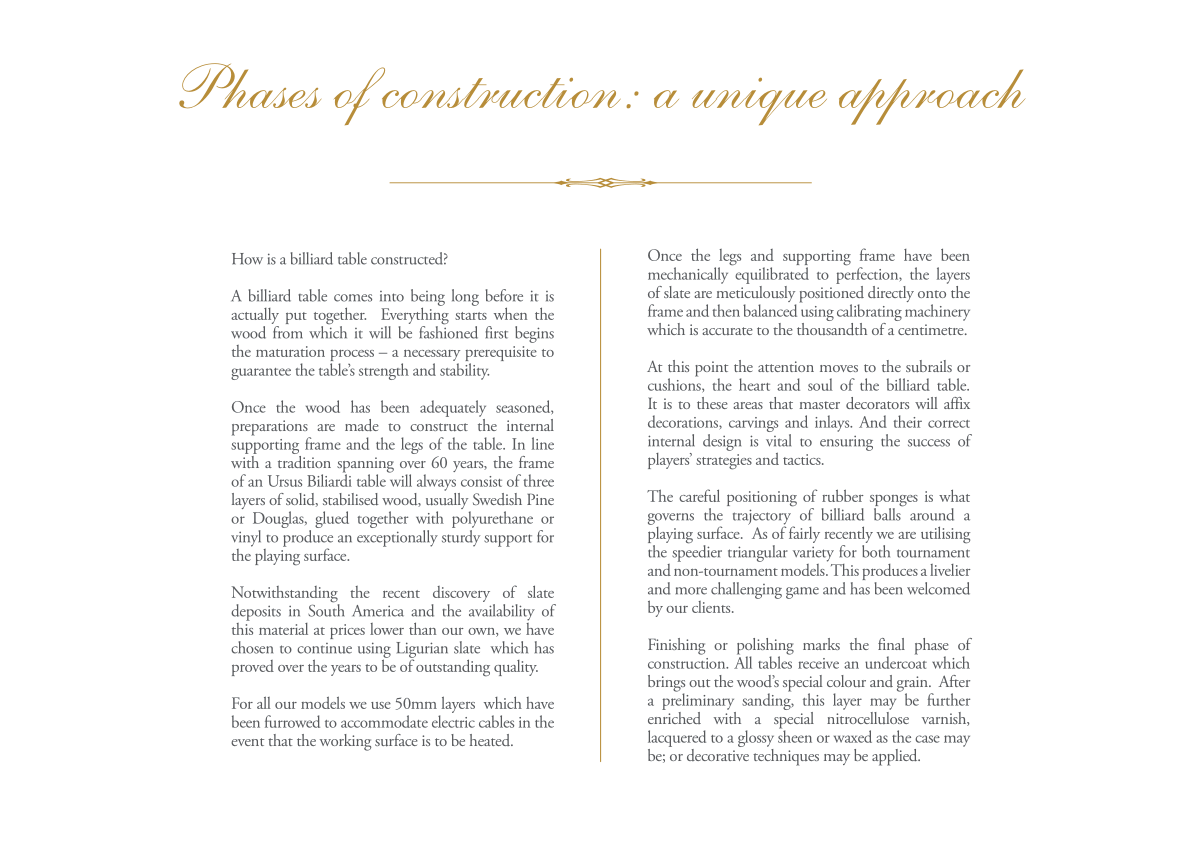How is a billiard table constructed?
A billiard table comes into being long before it is
actually put together. Everything starts when the
wood from which it will be fashioned first begins
the maturation process – a necessary prerequisite to
guarantee the table’s strength and stability.
Once the wood has been adequately seasoned,
preparations are made to construct the internal
supporting frame and the legs of the table. In line
with a tradition spanning over 60 years, the frame
of an Ursus Biliardi table will always consist of three
layers of solid, stabilised wood, usually Swedish Pine
or Douglas, glued together with polyurethane or
vinyl to produce an exceptionally sturdy support for
the playing surface.
Notwithstanding the recent discovery of slate
deposits in South America and the availability of
this material at prices lower than our own, we have
chosen to continue using Ligurian slate which has
proved over the years to be of outstanding quality.
For all our models we use 50mm layers which have
been furrowed to accommodate electric cables in the
event that the working surface is to be heated.
Once the legs and supporting frame have been
mechanically equilibrated to perfection, the layers
of slate are meticulously positioned directly onto the
frame and then balanced using calibrating machinery
which is accurate to the thousandth of a centimetre.
At this point the attention moves to the subrails or
cushions, the heart and soul of the billiard table.
It is to these areas that master decorators will affix
decorations, carvings and inlays. And their correct
internal design is vital to ensuring the success of
players’ strategies and tactics.
The careful positioning of rubber sponges is what
governs the trajectory of billiard balls around a
playing surface. As of fairly recently we are utilising
the speedier triangular variety for both tournament
and non-tournament models. This produces a livelier
and more challenging game and has been welcomed
by our clients.
Finishing or polishing marks the final phase of
construction. All tables receive an undercoat which
brings out the wood’s special colour and grain. After
a preliminary sanding, this layer may be further
enriched with a special nitrocellulose varnish,
lacquered to a glossy sheen or waxed as the case may
be; or decorative techniques may be applied.
Phases of construction: a unique approach


